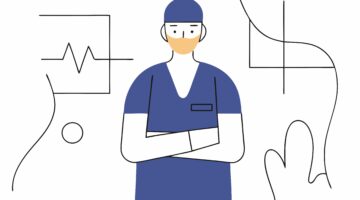
Healthcare innovation is frequently accompanied with skepticism and resistance, even when it promises to improve patient outcomes and operational efficiency. Healthtech companies prioritize clinical validation, regulatory approvals, and performance metrics to ensure their technology meets industry standards. However, they often overlook one crucial factor: clinician adoption. Even the most promising medical advancements struggle to take off in real-world settings without clinician buy-in. This article explores key factors that affect clinician adoption and provides directions on how healthtech companies can better position their innovations for success.
Clinical accuracy and reliability
No matter how innovative a technology is, it must be clinically proven to provide accurate and reliable results. Inaccurate results can lead to significant health risks, especially in areas such as diagnostics and treatment planning. For example, when it comes to diagnostic tools, clinicians prioritize precision over convenience. At the same time, clinicians often prefer low-risk solutions that integrate easily into existing workflows, sometimes downplaying clinical outcomes as a competitive advantage, especially when the technology does not offer significant improvements over competitors.
Accuracy is not the area where competition can be easily won. One significant issue arises with point-of-care (POC) devices. Often marketed as accurate, they might not meet the strict standards required for widespread adoption. The Clinical Laboratory Improvement Amendments (CLIA) allow certain tests to be designated as “waived,” meaning they are simple to perform and have a low risk for incorrect results. However, CLIA-waived status does not guarantee a successful FDA approval. Since clinicians rely on FDA approval to guarantee that the technology has undergone extensive testing for safety and efficacy, having a CLIA-waived device without FDA approval undermines their trust.
Beyond FDA approvals, the reliability of innovative health technologies is also assessed through:
- Peer-reviewed studies that ensure technology has undergone a comprehensive clinical evaluation.
- Real-world clinical performance, which highlights how well technology performs in everyday medical settings.
- Comparisons to existing diagnostic or treatment standards, which allow clinicians to assess the new technology’s effectiveness and compare it to tried-and-true methods.
Time-to-result and ease of use

Navigating The Right Steps For Your Healthcare Startup
This webinar will explore how a banking platform approach could be the resource for your company.
One of the primary concerns among clinicians is how quickly a technology delivers results. In areas such as fertility treatments, where quick blood test results are frequently required for medication modifications, this is particularly important. In such cases a device that accelerates the diagnostic process and does not require specialized training is more likely to be adopted.
However, a device runs a risk of being rejected when it demands too much manual calibration or involves a time-consuming setup and operation process. For example, a point-of-care (POC) device that is difficult to use or requires specialized training will struggle to gain clinician trust and acceptance. On the other hand, automated solutions that require less physical interaction are typically more enticing and are more likely to be adopted in clinical settings.
The ideal solution is one that requires minimal interaction from healthcare professionals while integrating seamlessly with existing systems, such as Electronic Health Records (EHRs). More and more, clinicians are seeking solutions that fit naturally into their daily routine without disrupting established workflows or requiring a steep learning curve. Devices that combine speed and ease of use, with the added benefit of automatic data uploads into systems like EHRs, allow healthcare providers to make quick decisions with minimal effort. As healthcare professionals are under constant time pressure, reducing manual processes is a key factor in driving adoption.
Addressing unmet needs
The ability of a technology to address a pressing, universal need is a critical factor in clinician adoption. Many healthtech companies develop features they believe are valuable, only to discover later that these features do not drive adoption. Instead of depending solely on surveys and focus groups, direct clinical observation is the best way to determine unmet needs. As one industry expert noted, “You can’t ask a clinician what they need—they don’t have time to think about it. You have to watch them and identify inefficiencies.” Clinicians may not always express a need for change because they have learned to tolerate ineffective procedures. In everyday workflows, healthtech innovators need to spot inefficiencies, pain areas, and hidden bottlenecks. Proactively addressing these problems increases the likelihood that clinicians will endorse the solution.
Addressing systemic challenges
The healthcare industry remains plagued by inefficiencies. Approximately 25 percent of healthcare spending in the United States is considered wasteful. This status quo opens a large window of opportunity for innovative healthcare solutions that can streamline clinical operations, reduce administrative burden and overtreatment, address overpayment, and improve care without raising expenses.
The clash between financial and clinical priorities in healthcare is one of the factors that slows down innovation and affects adoption. The fee-for-service model incentivizes procedures over preventive care, discouraging technologies that reduce hospitalizations. Hospitals reliant on admissions may resist solutions that lower readmission rates, and closed EHR systems limit integration opportunities for new tools. However, solutions that only provide incremental improvements often struggle to take off. More disruptive innovations that address systemic inefficiencies in healthcare are a very nuanced topic. At the same time, when they are aligned with clinician needs and align financial incentives with patient-centered advancements, ensuring value for all stakeholders, they are more likely to succeed.
Conclusion
Healthtech startups often fail to distinguish between selling a product and having it adopted by hospitals or healthcare providers. The process of buying a product involves a one-time transaction; adoption requires integration into clinical protocols, which involves substantial effort. This may require changes in clinical practices, widespread usage, and, in some cases, adoption trials. If not fully integrated, a product may just end up unused. The clinician adoption process involves not just selling but ensuring the product becomes a necessary part of daily clinical practice.
Photo: wenmei Zhou, Getty Images
Yegor Tsynkevich is an award-winning product design expert, co-founding partner of 415Agency. He specializes in user-centric solutions for digital healthcare and medical technology companies. With a proven track record, Yegor has contributed as UX consultant to over 30 companies, enhancing product design for medical devices, electronic medical records (EMR) solutions, and clinical software.
This post appears through the MedCity Influencers program. Anyone can publish their perspective on business and innovation in healthcare on MedCity News through MedCity Influencers. Click here to find out how.









